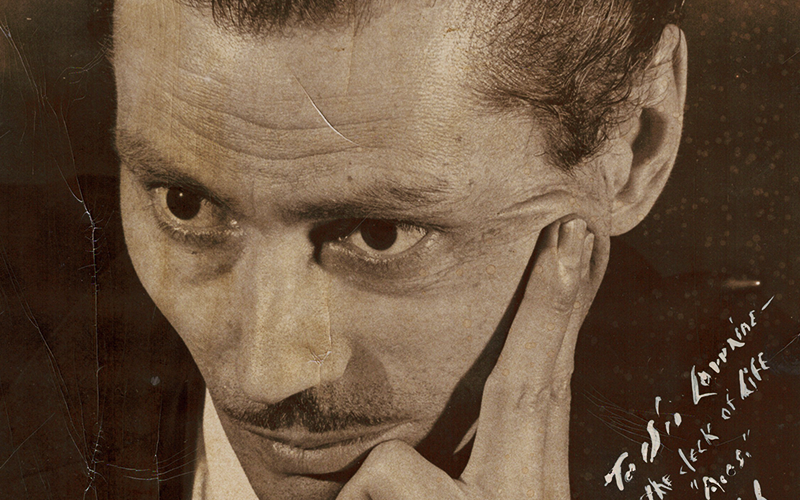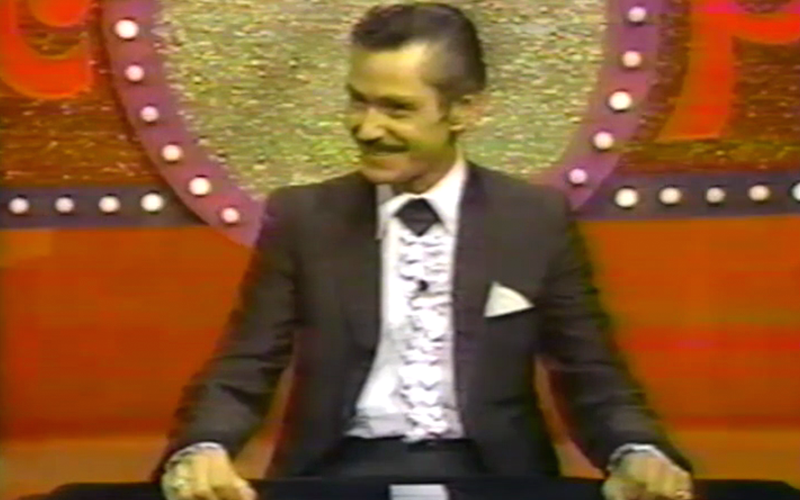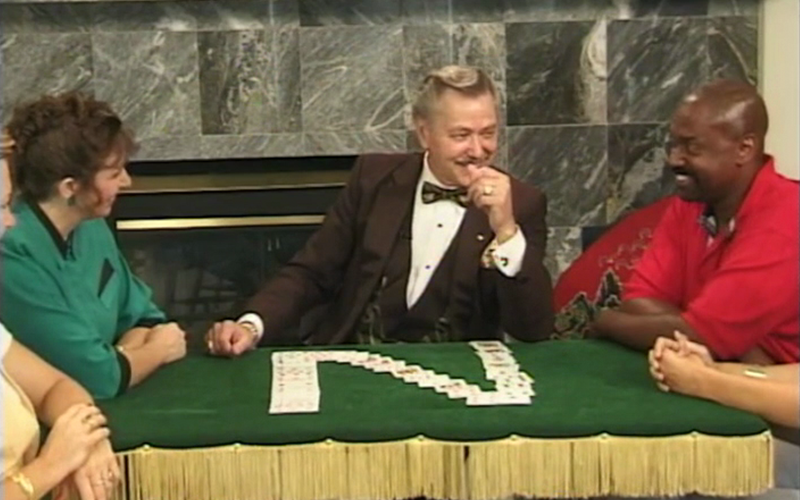Submitted by Jamy Ian Swiss on
MARTIN NASH
One of the wondrous resources here at Magicana is the video archive, which includes hundreds of videos from the 1970s Canadian television series, The Magic Palace. Recently in browsing the archives for the umpteenth time, I discovered that there are no less than sixteen videos of the late Martin Nash, one of the finest performing cardicians I’ve ever known, and I had the pleasure and privilege of knowing him well. (Still more clips appear there courtesy of Meir Yedid.)
Martin was Canadian, a full-time professional, and had a tremendous repertoire, and so thus was a stellar resource for the show, and it’s no surprise in retrospect that he was on many, many times, in a recurring feature they dubbed “The Card Corner.” Later in life, Martin relocated to Los Angeles and was a regular performer and presence at the Magic Castle. It was at the Magic Castle, in the 1980s and ‘90s, that I finally got to know him and spend many times hanging with him at the Castle. And while I believe I first saw him perform at a magic convention in the early 1980s, he had already been a profound influence on me, as the trilogy of his books, written by Stephen Minch in the 1970s, arrived in my library at a critical juncture in my advancement as a sleight-of-hand magician focused on card work. Those books contain a wealth of material, and it’s unfortunate they are now so difficult to find: Ever So Sleightly; Any Second Now; and Sleight Unseen, published in 1975, 1977, and 1979 respectively. I love these books to this day.
The first time I saw him at that magic convention, he blew me away with exotic techniques I had never seen before. And truth be told, until the very end of his days he could still kill me with exotic sleights with which few could match his mastery. (I tell one such story in my memorial piece about Martin, who died in 2009, in my book, Devious Standards.) Later in his life he became a generous teacher, and he would readily share these secrets with any interested student. Fortunately he also left a legacy of instructional materials that include much of that work, and the smart money is on those zealous students willing to expend the effort to seek out and study that material.
Despite the fact that Martin’s technique was stellar, and that he was such a pleasure of a person to be around, it was above all as a performer that he truly shone for me. While gambling demonstrations and cheating skills, both genuine and bluff, have long been a part of the close-up magician’s repertoire, few have ever turned that kind of material into the bravura performance pieces that Martin presented. He had it all—the look, the feel, the personality, and the chops—to mix the facts and fictions into a heady stew that left an indelibly larger-than-life impression. He billed himself as “The Charming Cheat,” and he was ever true to the role, with flashy suits and jewelry, and an understated and captivating personal charm.
And his routining was outstanding. The best of the many lessons students can garner from Martin’s work is by watching his complete close-up acts that remain on video. Each act was built around a theme, and each was carefully constructed to keep raising the stakes, making the conditions and plots more and more amazing, and bringing everything together to climactic conclusions that often garnered standing ovations at the Magic Castle and elsewhere. Even though Martin portrayed himself as a gambling expert and often themed his material around that, his material models elements that magicians all too often overlook, including efficient scripts, focused clarity of effects, and a pet peeve of mine when magicians ignore it, the presence of and commitment to what Al Schneider calls the “intention of magic,” meaning providing the theatrical moment that the magic occurs.
Quite simply, I loved to watch him work, and I believe you will too. It’s easy to fall down the rabbit hole of the remarkable archive of his work, both early on The Magic Palace, and later on instructional videos, that can be found in the Magicana archive. It’s not easy to make choices, but I’ve made a few for you to enjoy. Please: expand the browser to the max, turn up the sound, and put down the smart phone so you can watch these pieces from start to finish. Please enjoy my friend, The Charming Cheat: Martin Nash.
It’s only right that we begin with an example of what Martin Nash did best, a routine about gambling and cheating. This is well constructed and worth watching in its eight-minute entirety.
Martin Nash: False Dealing
This is a fine example of the kind of elaborate routines that in some hands might easily be reduced to dull puzzles, but that Martin Nash knew how to build, creating increased interest and drama leading to great finales.
Martin Nash: Colors on the March
One of my favorites of Martin’s complete acts was called “Jacks or Better,” build entirely around the unlikely theme of the “sandwich trick” card plot. This is the concluding piece to that act, a trick that killed me every time I saw it, and which I write about further in Devious Standards. Pay attention, and be amazed.
Martin Nash: Jacks or Better
Watch more Martin Nash in the Screening Room
SEE TAKE TWO INDEX










